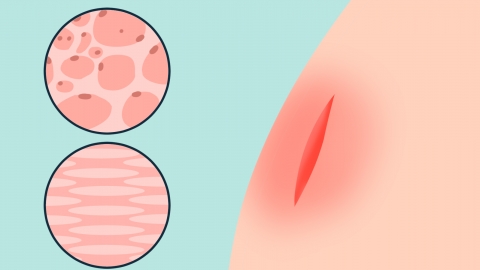Which wounds do not leave scars?
Generally speaking, scars refer to fibrosis. Superficial abrasions, sterile minor wounds, first-degree burns, superficial second-degree burns, and minor wounds in individuals without a scarring predisposition usually do not leave scars. If discomfort occurs, timely medical consultation is recommended. Detailed explanations are as follows:

1. Superficial abrasions
When the skin experiences mild friction or scraping, if the wound is limited to the epidermis, it typically does not leave a scar after healing. This is because the epidermis has strong regenerative capabilities, rapidly restoring and replacing damaged cells.
2. Sterile minor wounds
Sterile minor wounds refer to tiny wounds not contaminated by bacteria or other microorganisms. These wounds have a low risk of infection and heal smoothly, thus rarely leaving scars.
3. First-degree burns
First-degree burns affect only the epidermis. These burns typically present as redness, swelling, and pain but do not form blisters. With proper treatment, first-degree burns usually heal completely without leaving scars.
4. Superficial second-degree burns
Superficial second-degree burns involve the stratum germinativum of the epidermis and the papillary layer of the dermis. Although deeper than first-degree burns, superficial second-degree burns typically do not leave noticeable scars if properly managed. However, temporary pigmentation may occur but will gradually fade over time.
5. Minor wounds in individuals without a scarring predisposition
A scarring predisposition refers to an individual's tendency to develop hypertrophic scars or keloids after skin injury. For individuals without this predisposition, the risk of scar formation following injury is relatively low.
To reduce scar formation, patients should also pay attention to dietary adjustments and lifestyle modifications during wound healing, such as avoiding spicy or cold irritant foods, maintaining regular sleep patterns, and refraining from smoking and alcohol consumption.





